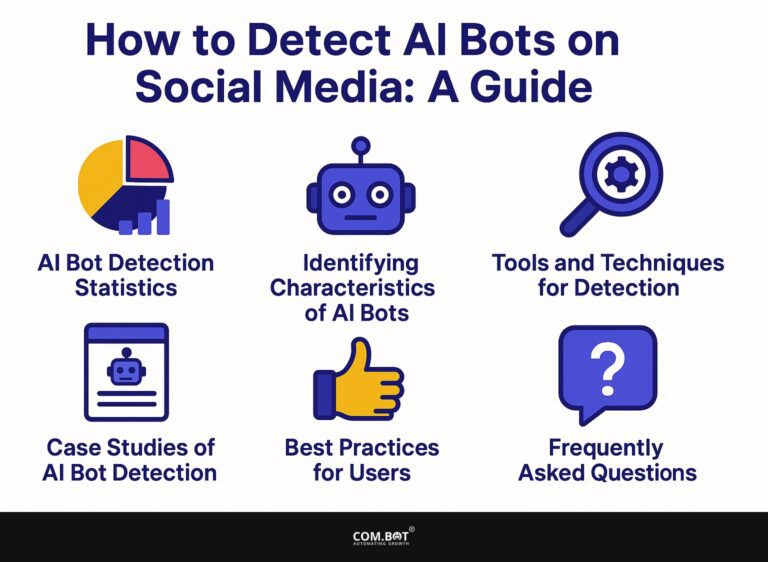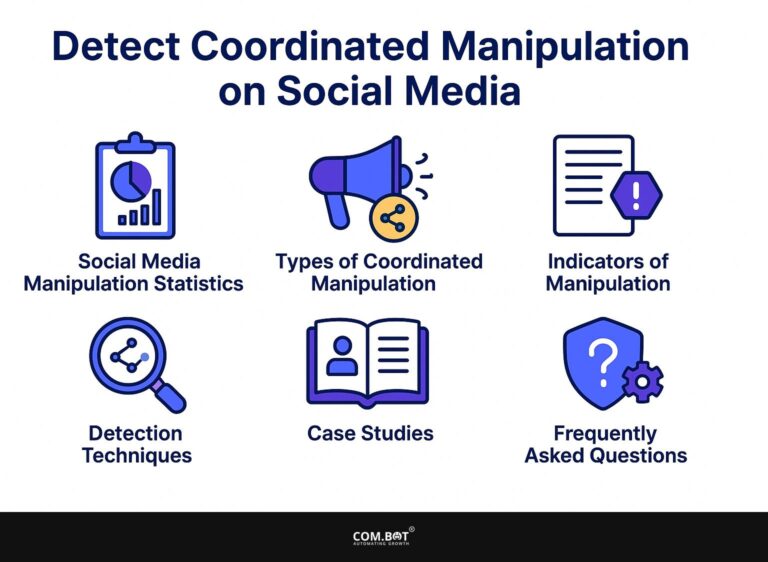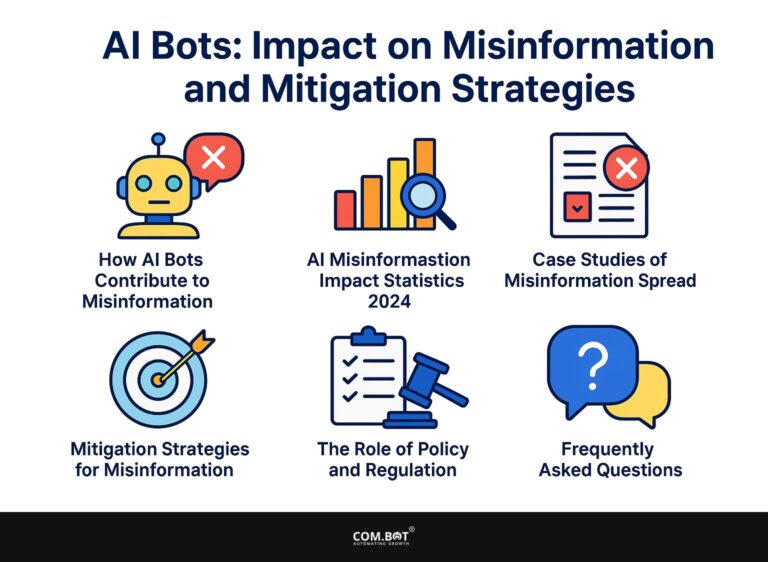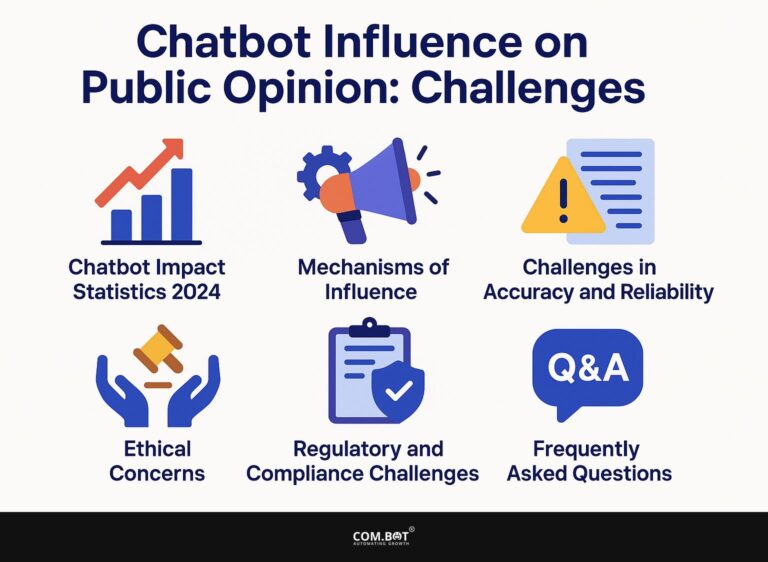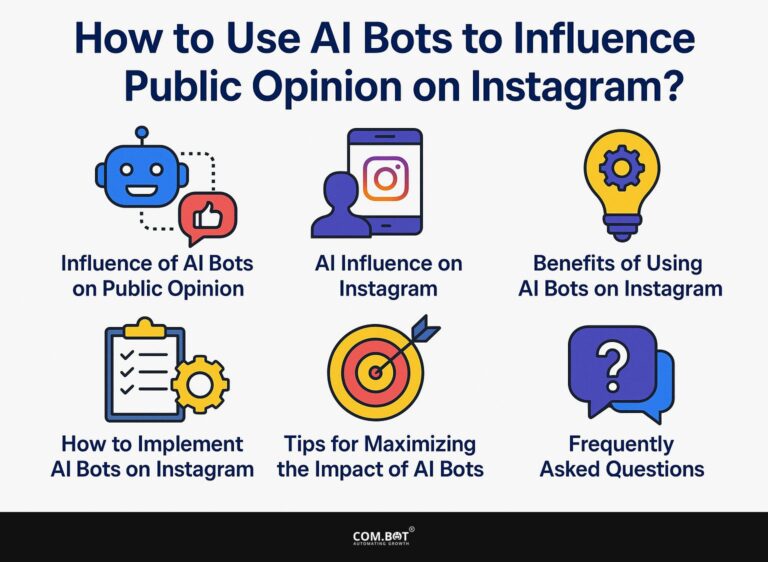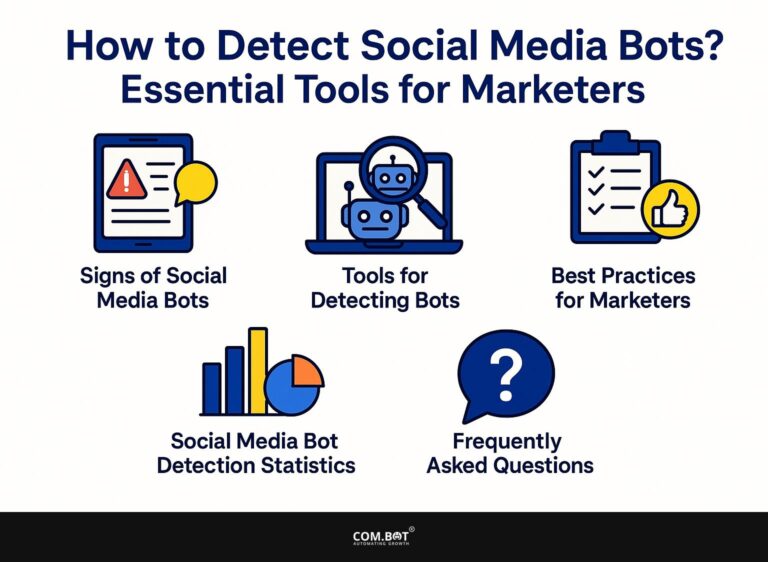Influence of Generative AI on Public Opinion
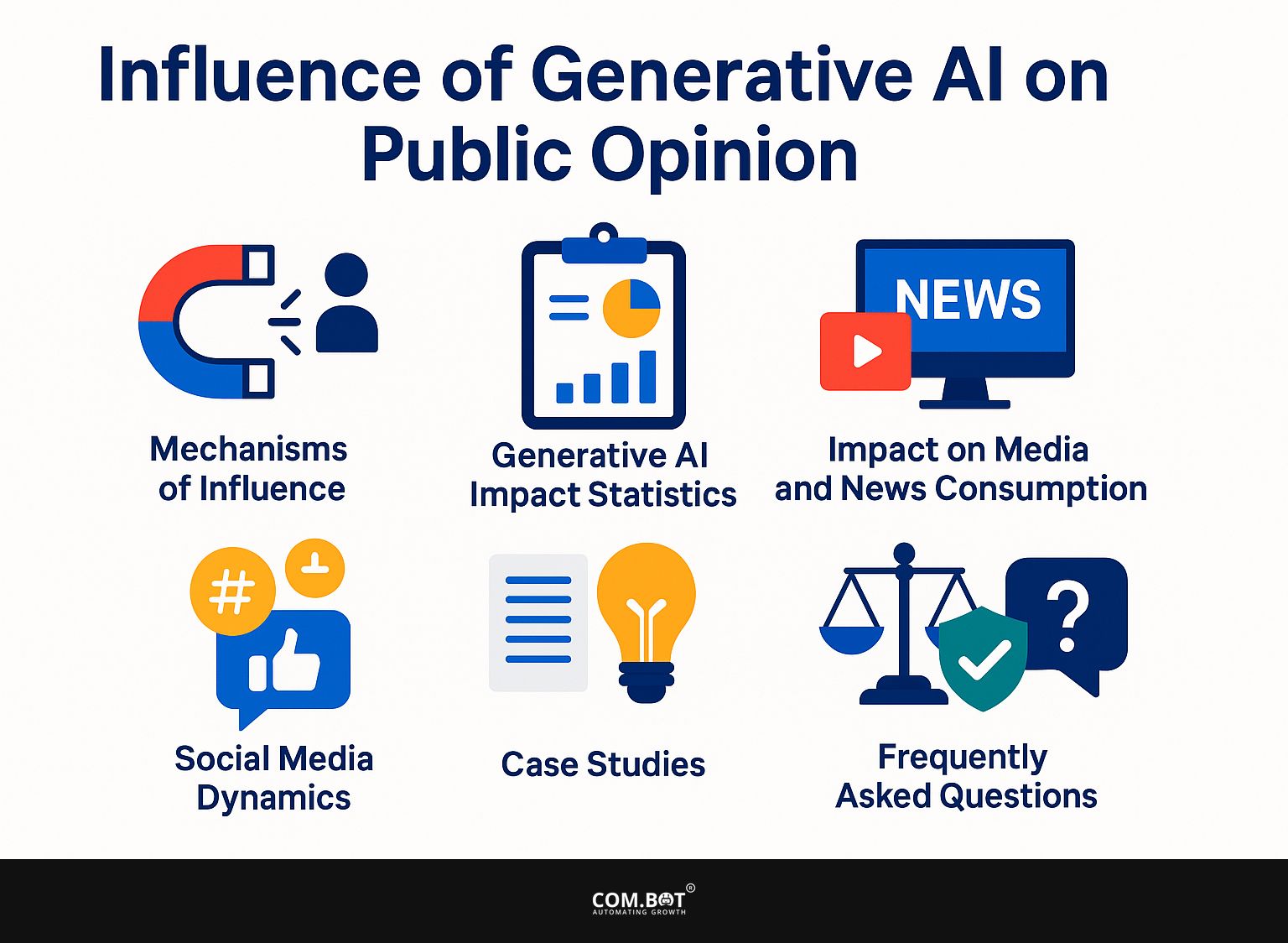
In the age of generative AI, the influence of advanced technologies like ChatGPT is reshaping public opinion, especially as we approach the 2024 U.S. presidential election. With growing worries about false information, the ability of AI to create stories is more important than before.
This article looks at how generative AI is changing how we consume media, giving more people a platform, and questioning the reliability of information, which greatly influences politics.
Key Takeaways:
- Generative AI can influence what people think by making and sharing specific content, affecting how news is reported and how much individuals trust the media.
- The use of AI algorithms in social media can result in the amplification of certain viewpoints and the formation of echo chambers, increasing political polarization.
- With the increasing impact of generative AI, it’s important to deal with ethical issues like false information and legal challenges to make sure it’s used responsibly in influencing public opinion.
- 1 Mechanisms of Influence
- 2 Generative AI Impact Statistics
- 3 Impact on Media and News Consumption
- 4 Social Media Dynamics
- 5 Case Studies
- 6 Ethical Considerations
- 7 Frequently Asked Questions
- 7.1 1. How does Generative AI impact public opinion?
- 7.2 2. Can Generative AI be used to manipulate public opinion?
- 7.3 3. What are some potential benefits of Generative AI on public opinion?
- 7.4 4. Are there any ethical concerns surrounding the use of Generative AI in public opinion?
- 7.5 5. How can Generative AI be used to influence public opinion in the political arena?
- 7.6 6. How can society make sure Generative AI is used responsibly in influencing public opinion?
1. Definition and Overview
Generative AI uses algorithms to create things like text, images, and music. Recent advancements have significantly improved the quality of these creations.
These algorithms function by analyzing vast datasets to learn patterns and structures in existing content. OpenAI’s GPT-3 has changed the way text is created, used in tools like customer service chatbots and writing content for marketing. AI Bots for Customer Support highlight the benefits and satisfaction they bring, further showcasing the practical applications of GPT-3 in everyday business operations.
According to a recent survey, nearly 30% of U.S. adults now engage with generative AI tools, highlighting its growing impact. In fields like art and design, tools like DALL-E can generate unique images from textual descriptions, showcasing the versatility of generative AI across various domains.
2. Historical Context and Development
The evolution of generative AI traces back to foundational technologies, with key milestones including the development of neural networks in the 1980s to today’s sophisticated models.
A significant development occurred when Ian Goodfellow introduced Generative Adversarial Networks (GANs) in 2014. GANs changed content creation by using two neural networks-one creates data and the other checks it. This technique paved the way for applications in art, music, and deepfakes, allowing machines to create high-quality images and even compose music indistinguishable from human-produced work.
Recently, transformer models such as OpenAI’s GPT-3 have significantly impacted generative AI, making it possible to create detailed text and interactive agents, leading to its wider use in different areas.
Mechanisms of Influence
Generative AI affects various parts of media by enhancing content creation and enabling tailored distribution based on user preferences, which aligns with the strategies for creating effective AI bot personas that cater to diverse audience needs.
Generative AI Impact Statistics
Generative AI Impact Statistics
Global AI Usage: How Different Ages and Regions Use AI
Worldwide AI Use: How AI is Used and Accepted
Global AI Usage: Business Benefits and Efficiency
Generative AI Impact Statistics Shows the growing impact of AI on different groups of people and areas, focusing on how it could change economies and work environments. The data gives a complete view of how widely AI is being used, how much people from various age groups trust it, and the expected financial gains from AI technologies.
Global AI Usage and Insights reveal significant disparities in AI adoption across countries. India leads with an impressive 73% of the population using AI, reflecting rapid technological integration and a growing digital economy. In contrast, Australia (49%), the US (45%), and the UK (29%) show different levels of use, pointing to varying speeds of adopting new technology and how prepared the infrastructure is.
- Generational and Regional Usage: The data indicates that 65% of Millennials and Gen Z are engaging with AI, underscoring the younger generation’s comfort with technology and its applications in daily life. Additionally, with 72% of employed individuals utilizing AI, it highlights the technology’s growing role in enhancing workplace efficiency.
- AI Employment and Adoption: Trust in AI remains a critical factor, with 52% of Gen Z ready to trust AI for making choices. This highlights a gradual move towards trusting AI-generated information for choices in both personal and work-related situations.
Business Value and Productivity highlights AI’s significant impact on the overall economy. AI is projected to contribute $2.6 trillion annually to the global economy, with a substantial 27.5% boost to economic growth. Additionally, AI holds potential for 0.35% growth in labor productivity indicating its ability to improve operations, lower costs, and increase efficiency across industries.
The Generative AI Impact Statistics Tell a clear story: AI is changing how people act and work, and it’s also making big changes in the economy. As more people and organizations start using AI, it’s important to look at how it affects various areas and communities. This understanding is essential for using AI to support worldwide growth and new ideas.
1. Content Creation and Distribution
AI tools are revolutionizing content creation, with platforms like Jasper and Copy.ai enabling marketers to produce high-quality articles in minutes.
For example, a digital marketing agency integrated Jasper into their workflow and increased their publishing frequency by 400%, allowing them to consistently deliver fresh content to their audience. They started with Jasper to quickly write blog posts, then improved them through group feedback sessions.
Using Grammarly for editing helped produce copy without mistakes. This simple method improved their content plan and increased their organic traffic a lot in just a few months.
2. Personalization and Targeting
By using user data, generative AI can customize content to match personal preferences, greatly increasing audience involvement.
Marketers can use tools like Optimizely to perform A/B testing on customized content to see which versions result in higher conversion rates. Platforms like Segment track what users do at different places to offer personalized suggestions.
In addition, Dynatrace uses machine learning algorithms to improve these recommendations as user preferences change. By using these tools, businesses can create an engaging user experience that holds the audience’s attention effectively.
Impact on Media and News Consumption
Generative AI is changing the way news is shared and read, bringing notable changes to journalism methods and how audiences connect with news.
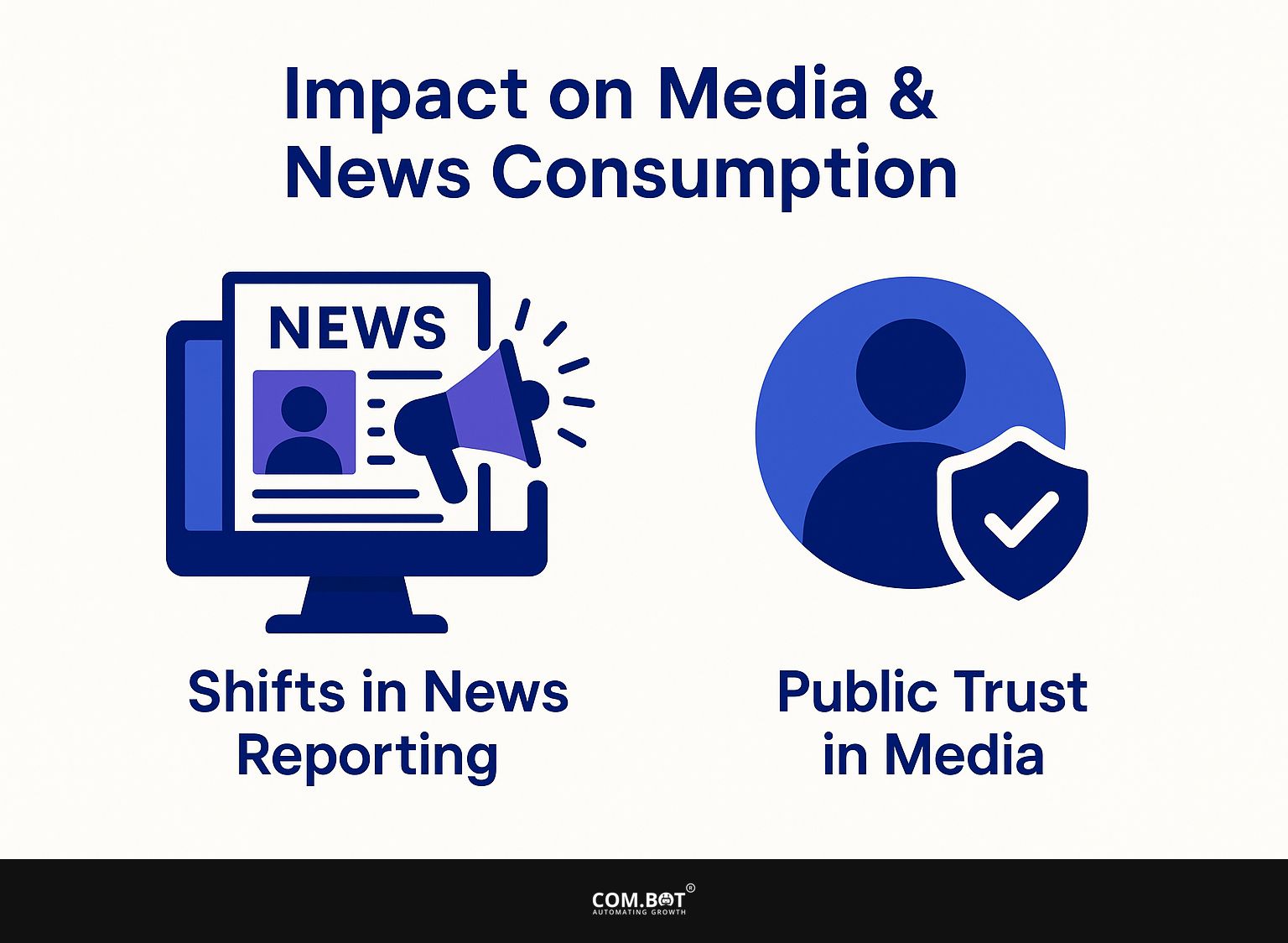
1. Shifts in News Reporting
Tools like Wordsmith use AI to help news organizations write reports automatically, so they can share urgent news faster. This shift is exemplified by the Associated Press, which uses Wordsmith to generate earnings reports, allowing them to publish stories mere minutes after financial disclosures.
Similarly, Reuters employs AI-driven tools for sports reporting, producing match summaries almost in real-time. These methods improve accuracy by reducing mistakes made by people, allowing journalists to concentrate on detailed analyses.
With tools like Automated Insights, publishers can change content for various readers, altering news stories to match individual preferences. This increases reader interest and expands the range of topics covered.
2. Public Trust in Media
The rise in using generative AI has led to concerns about incorrect information, causing people to trust media sources less as skepticism increases.
Recent studies indicate a significant decline in trust towards traditional media platforms, with a report from the Pew Research Center revealing that only 29% of Americans express confidence in the information provided by these outlets. This doubt is connected to the spread of AI-made content, showing the need for better media literacy.
Using resources such as Media Literacy Now or the News Literacy Project helps people critically examine sources, identify bias, and check information. This leads to a public that is more knowledgeable and able to handle today’s complicated media world.
Social Media Dynamics
Social media platforms are using generative AI more and more to improve user experience, but this can cause the spread of false information by algorithms. For a deeper understanding of how AI impacts social media dynamics, including detection and implementation, our expert opinion sheds light on these complex issues.
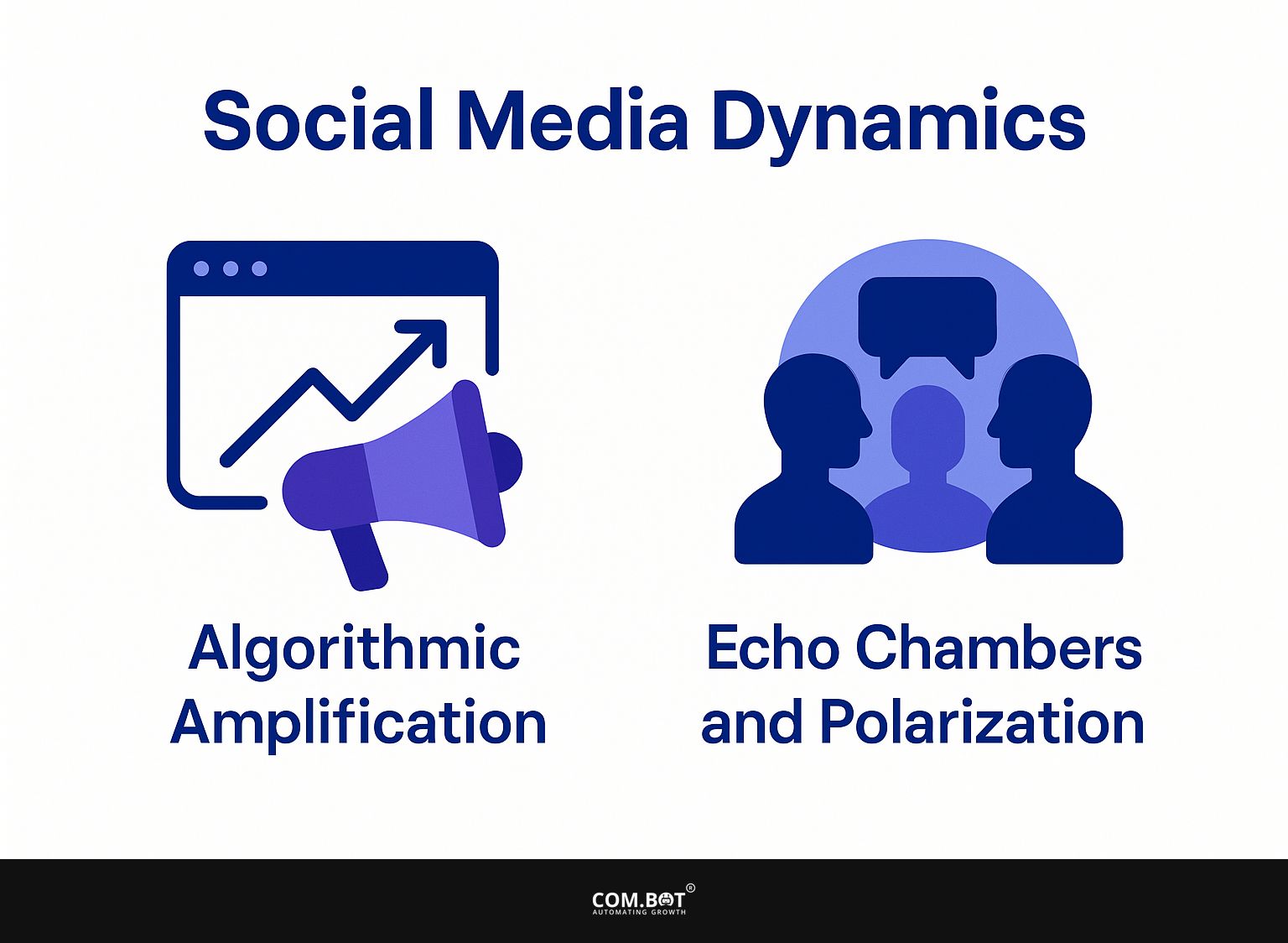
1. Algorithmic Amplification
The algorithms used by social media platforms can unintentionally spread false information, leading to public worry about misinformation. This amplification often results from the platforms prioritizing engagement metrics, such as likes and shares, over content accuracy.
Studies show that misinformation spreads six times faster than factual news, primarily due to algorithmic treatment favoring sensationalism.
For instance, a report from MIT highlights that false stories on Twitter reached 1,500 people faster than true stories. To combat this, users can employ fact-checking tools like Snopes or tools like NewsGuard, which assess sources for credibility, to stay informed and minimize sharing misleading content.
2. Echo Chambers and Polarization
Generative AI can contribute to the formation of echo chambers, where users are only exposed to information that reinforces their existing beliefs. This happens through algorithms that select content based on how users engage with it.
For example, platforms like Facebook or YouTube use AI to study what videos a person watches and then suggest similar videos. If a user frequently engages with politically charged videos, the platform is likely to present more extreme views, leading to increased polarization.
Tools like Google Trends and sentiment analysis can help see these patterns, showing how users may become more involved in specific ideologies without seeing different viewpoints.
Case Studies
Looking at specific examples shows how generative AI is used in different areas, like political campaigns and public health communication.
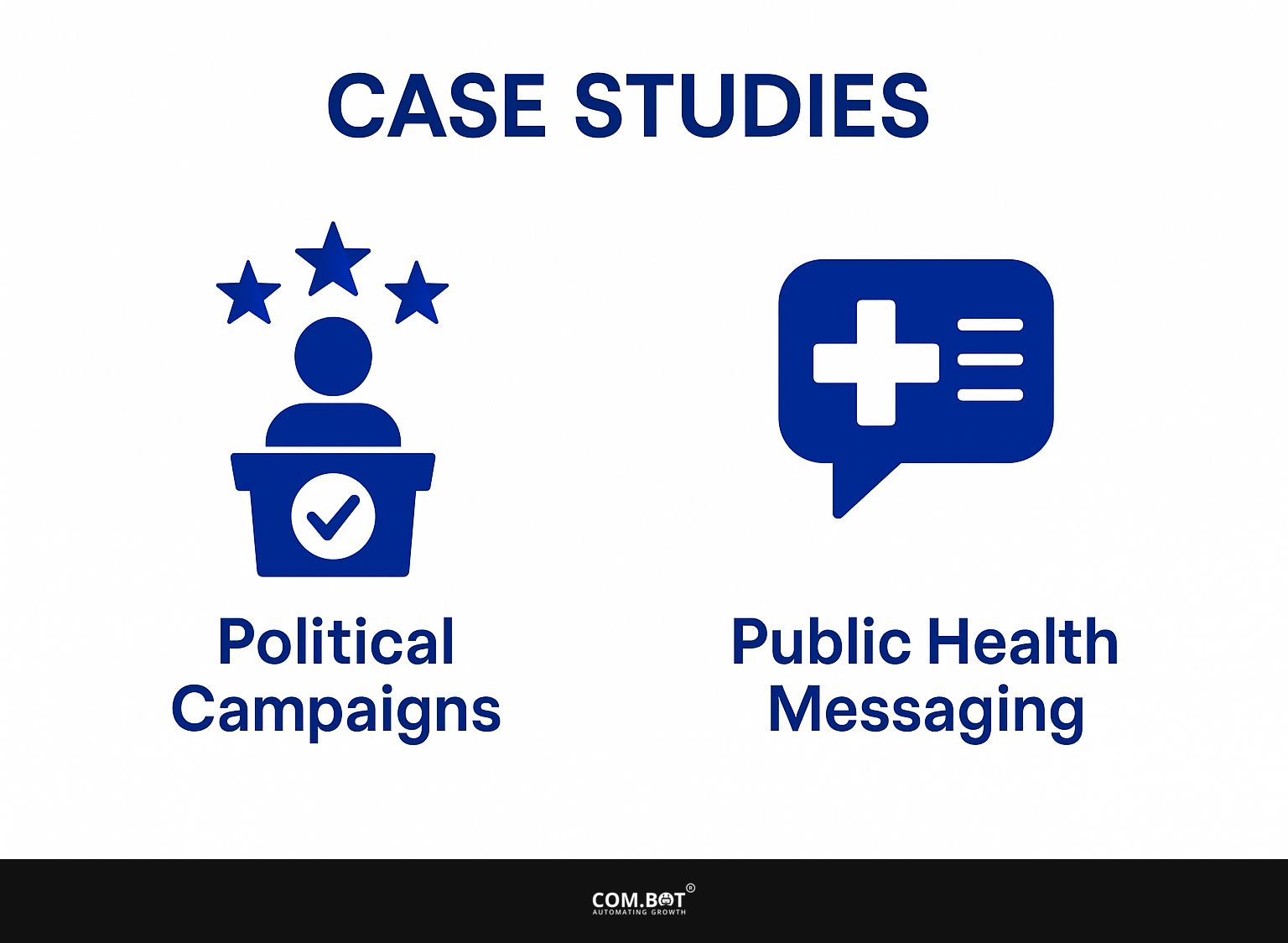
1. Political Campaigns
The 2024 U.S. presidential election showcases the role of generative AI in shaping campaign strategies and voter engagement.
Campaigns use tools like ChatGPT to create customized messages that connect with particular groups. For instance, a campaign might use AI to analyze social media data, tailoring outreach strategies to swing voters by addressing local issues directly.
Platforms like Civis Analytics enable predictive modeling, helping teams identify potential voter concerns. The effects are important; customized messaging can increase involvement but raises ethical issues about manipulation.
As campaigns increasingly employ these technologies, transparency and responsible use become paramount to maintain trust and integrity in the electoral process.
2. Public Health Messaging
Generative AI has played a critical role in public health messaging, especially during the COVID-19 pandemic, aiding in dissemination and combating misinformation.
Organizations used OpenAI’s GPT-3 to create clear and interesting content for various readers. For example, the CDC used AI to develop customized FAQs that answered community questions and provided clear information about health rules.
Platforms like Canva introduced AI tools to help public health campaigns make engaging infographics, simplifying complex information. By using these tools to create responses and content automatically, they saved time and kept messages the same across all channels, which was important for keeping public trust during a health crisis.
Ethical Considerations
The ethical issues of using generative AI include problems related to false information and the need for strong regulations. This concern about misinformation aligns with the impact of AI bots, explored in our detailed analysis of AI Bots: Impact on Misinformation and Mitigation Strategies.
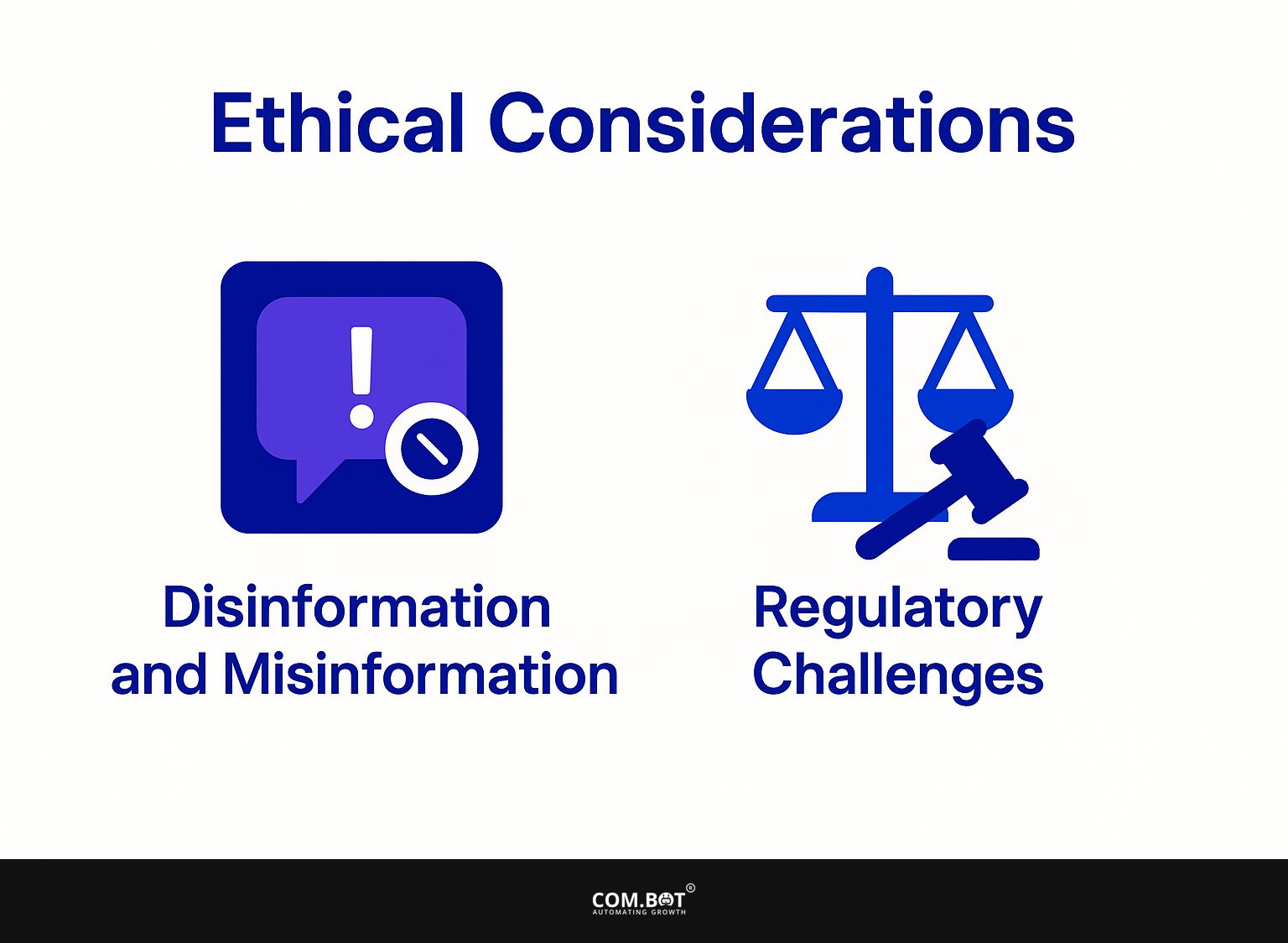
1. Disinformation and Misinformation
Generative AI technologies can inadvertently contribute to the spread of disinformation, raising significant public concerns regarding its reliability.
A clear example is the use of AI-created deepfake videos, which were used during political campaigns to spread false stories. Platforms like Twitter and Facebook have implemented fact-checking services to combat this issue, yet misinformation can still spread rapidly.
To improve media literacy, people can use tools like MediaWise to check sources and statements. Educational programs focused on critical thinking can help people identify reliable information and avoid false content, rebuilding public confidence and promoting careful use of media.
2. Regulatory Challenges
As generative AI grows, regulatory issues become more common, requiring a thorough plan to make sure it is used ethically and to reduce false information.
Current regulations, such as GDPR in Europe, primarily focus on data privacy but often overlook the unique ethical implications of generative AI. To fill these gaps, a detailed set of rules could require companies to clearly share how they use AI in creating content and be responsible for spreading false information.
Creating a separate review group could assess the ethical aspects of content made by AI. This would check for rule-following, build public confidence, and support new ideas in media and communication.
Frequently Asked Questions
1. How does Generative AI impact public opinion?
Generative AI can have a significant influence on public opinion by creating and disseminating content that can shape people’s perceptions and beliefs.
2. Can Generative AI be used to manipulate public opinion?
Yes, Generative AI can change how people think by creating content meant to convince or mislead them.
3. What are some potential benefits of Generative AI on public opinion?
Generative AI can help start more informed and varied conversations about different subjects, leading to a better grasp of different viewpoints within society.
4. Are there any ethical concerns surrounding the use of Generative AI in public opinion?
Yes, there are ethical concerns related to the use of Generative AI in shaping public opinion, such as the potential for bias or the spread of misinformation.
5. How can Generative AI be used to influence public opinion in the political arena?
Generative AI can be used to create customized political messages and specific ads that can influence public opinion in favor of a candidate or political cause.
6. How can society make sure Generative AI is used responsibly in influencing public opinion?
To make sure Generative AI is used responsibly, we need clear rules and openness in how this technology is developed and used. Media literacy and critical thinking skills are important for people to judge how accurate information from Generative AI is.
